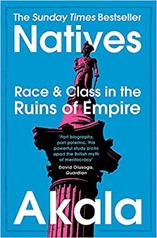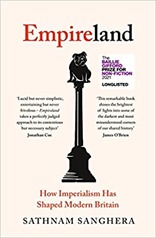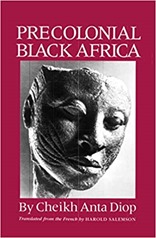 Another book from those I follow on Twitter, On Savage Shores by Caroline Dodds Pennock which is about the Indigenous people who came to Europe in the early years of the invasion of the Americas.
Another book from those I follow on Twitter, On Savage Shores by Caroline Dodds Pennock which is about the Indigenous people who came to Europe in the early years of the invasion of the Americas.
The book is divided thematically into six chapters titled Slavery, Go-betweens (covering translators), Kith and Kin (the transport of families, and the adoption of Indigenous people – mainly boys – by Spanish men), the Stuff of Life (about products such as potatoes, tomatoes, tobacco and so forth), Diplomacy, and Spectacle and Curiosity (about Indigenous people as entertainment).
The focus is on Meso- and South America and the 16th century, when most of the interactions were with Spain and Portugal. There is some mention of colonisation of North America which was more related to Britain, and Brazil which was an interest to the French.
I think the thing that struck me most was the number of Indigenous people in Europe, particularly in Spain, from the very start of the 16th century. I had been aware from reading the history of various scientific expeditions that one or two Indigenous people were often brought back to show off in court. But On Savage Shores highlights that in fact thousands of people were brought, often crossing the Atlantic several times over a period of years. Many were brought explicitly as slaves but others came as diplomats, translators, companions although it is unclear in many cases how voluntary their travel was.
The second aspect which struck me was how active, and engaged in the Spanish legal systems and the Royal courts the Indigenous visitors often were, this was in part because Indigenous people were familiar with legal processes in their own countries. Furthermore courts both legal and Royal are an excellent source of primary documents, it is one of very few ways the Indigenous people were documented. Documents generated by Indigenous people are rather more sparse – there are a handful of pre-invasion codices, some spoken poetry captured in writing at a later date and legal-like documents created to support land claims and the like in Spanish courts. Many of the European records are of those seeking emancipation, quite often successfully.
Columbus very clearly went to the New World with a view to capturing slaves – he had visited the Portuguese slaving fortress, Castle of Sao Jorge da Mina in Ghana prior to his visit and was evaluating the Indigenous people and their suitability for slavery from his first visits to the Americas. To the end of the 16th century something between 1 and 2 million Indigenous people were taken as slaves with most remaining in the Americas but some being brought back to Spain. In the same period about 300,000 Africans were enslaved and taken to the Americas. In theory Spain banned slavery in the mid-16th century, however it wrote itself a number of exceptions which meant the practice was to effectively continue in large volumes for many years.
As well as slaves the Europeans took people they saw as suitable as translators, they also took the children of important Indigenous leaders and some that acted as diplomats – taking their cases to the Spanish Court. For these people the level of coercion is difficult to ascertain. There were certainly a number who came to Europe voluntarily but others had little choice.
A recurring theme is the adoption of sons into the families of, for example Walter Raleigh, Christopher Columbus, and Hernando Cortés. This practice seems to have some basis in Indigenous practices and the adopted sons often gained relatively high social positions back in Europe. Similarly there is a Brazilian boy, Essomericq taken at age 15 by the French in 1504 who became a pillar of the community in France before dying at the age of 90 – although his story is somewhat in question having been recorded sometime after he died by a descendant with a point to prove.
There was a huge population collapse across the Americas due to European diseases in the fifty years after Columbus landed, the diseases travelled faster than the European invaders. The movements of Indigenous people need to be seen in this context, first of all the trans-Atlantic passage was a long grim voyage for all – taking in excess of 6 weeks in the 16th century. Added to this Indigenous people were vulnerable to European diseases, and frequently died in transit or within a few weeks of arriving in Europe. All Europe got in exchange was syphilis. Some of the Indigenous people travelling to Europe were looking for advantage from Spanish support back in their home countries which were in turmoil.
On Savage Shores was revelatory for me, it changed the way I thought about Indigenous people and, to a smaller degree, the Spanish invaders. The switch in viewpoint makes Indigenous people, just that – people – rather than exhibits. On Savage Shores is also an enjoyable read, the focus on one period and one region probably keeps it to a manageable length down a bit. It feels like there is scope for a second book focussed on North America.




